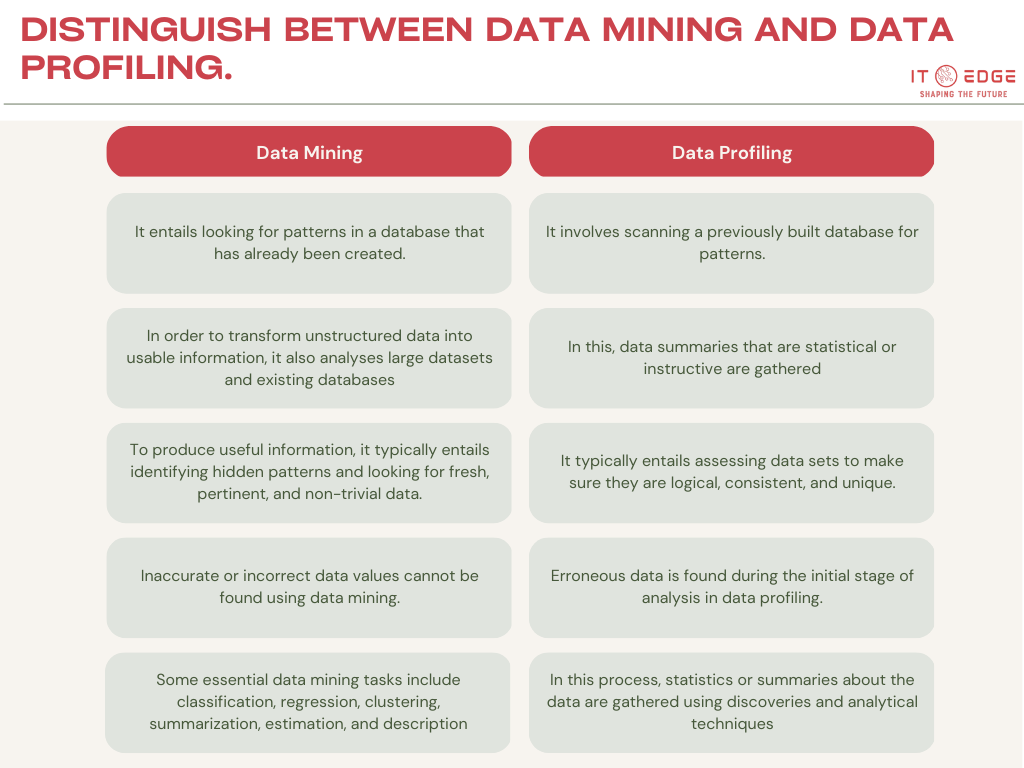As a job seeker in the field of data analysis, it is crucial to prepare for the interview process and understand the most common questions that you may be asked. Whether you are an entry-level candidate or a more experienced professional, it is important to demonstrate your technical skills, problem-solving abilities, and understanding of data analysis methodologies. In this article, we will provide a comprehensive guide to the most commonly asked data analyst interview questions, including both entry-level and more advanced topics.
10 entry-level data analyst interview questions
We’ll go over some of the most typical interview questions in this article if you’re applying for a position as a beginning data analyst. We’ll go over what the interviewer is looking for and how to respond to each question most effectively. Finally, we’ll discuss some best practises and advice for acing interviews. Let’s get going.
1. Tell me about yourself?
Although this question may appear general and open-ended, its true focus is on how you interact with data analytics. Focus your response on your path to becoming a data analyst. What initially piqued your interest in this area? What expertise as a data analyst do you have from prior employment or schooling?
Try to provide answers to these three questions as you create your response:
- What about data analysis interests you?
- What appeals to you about this position?
- Why are you the best applicant for the position?
2. Why are you the most qualified candidate for the job?
To train as a data analyst,
- Robust knowledge on reporting packages (Business Objects), programming language (XML, Javascript, or ETL frameworks), databases (SQL, SQLite, etc.)
- Proven abilities to analyse, compile, organise, and accurately distribute big data
- Technical expertise in data modelling, segmentation methods, and database design
Proficient understanding of statistical software for analysing large datasets (SAS, Excel, SPSS, etc.)
3. Why do data analysts do what they do?
Do you comprehend the position and its significance to the company, is what they’re really asking. You probably have a basic understanding of what data analysts do if you’re applying for a job in this field. To show that you comprehend the role and its significance, go beyond a straightforward definition from the dictionary.
Name, collect, clean, analyze, and interpret as the primary responsibilities of a data analyst. Be prepared to discuss the benefits of data-driven decision making and how these tasks can lead to better business decisions..
4. Which of your data analysis projects was the most successful or difficult?
What the interviewer wants to know: What are your strengths and weaknesses?
Interviewers ask this question to evaluate your abilities as a data analyst, including how you handle challenges and measure project success. When asked about a successful project, highlight your role and factors that contributed to its success. Relate your response to the job requirements listed in the job description. When asked about a difficult project, be honest and focus on the lessons learned. Explain what went wrong, such as insufficient data or small sample size, and how you would approach it differently in the future. Emphasize your ability to learn from mistakes.
5. Mention the different phases of an analytics project?
Steps in an analytics project:
- Problem definition
- Data exploration
- Data preparation
- Modeling
- Data validation
- Tracking and implementation
6. Mention What is data purification? Or, how do you go about cleaning up your data?
Data Cleaning: The process of identifying and correcting errors and inconsistencies in data to improve its quality. Explanation: Data cleaning is crucial to the overall process as it ensures that the data used for analysis and decision-making is accurate and reliable. Approach:
- Missing data: Fill in missing values using methods such as imputation or interpolation.
- Duplicate data: Identify and remove duplicate records.
- Data from different sources: Integrate data from various sources and ensure consistency in formatting and coding.
- Structural errors: Correct errors in the data structure, such as incorrect data types or inconsistent units of measure.
- Outliers: Identify and handle extreme values that may impact analysis results.
7. What are some of the best tools for data analysis?
Popular data analytics tools:
- KNIME
- Solver
- OpenRefine
- RapidMiner
- Tableau
- NodeXL
- Google Search Operators
- IO
- Google Fusion Tables
- Wolfram Alpha
8. Distinguish between data mining and data profiling?
Data Mining Process: In most cases, it entails data analysis to uncover previously undiscovered relationships. In this instance, spotting anomalous records, identifying dependencies, and examining clusters are of primary importance. In order to identify trends and patterns in large datasets, it also entails data analysis.
Data Profiling Process: It typically entails examining each attribute of that data. The emphasis in this situation is on giving pertinent information about data attributes like data type, frequency, etc. It additionally makes enterprise metadata evaluation and discovery easier.

9. How can you benefit from data visualization?
Due to how simple it is to view and comprehend complex data presented in the form of charts and graphs, data visualisation has rapidly increased in popularity. It highlights trends and outliers in addition to presenting data in an easier-to-understand format. The most effective visualizations make sense of data while reducing noise.
10. Describe Outlier?
Handling missing data and outliers is an important aspect of data cleaning, and interviewers will often ask about your approach to this task. Be prepared to discuss your understanding of various techniques for handling missing data, such as imputation or removal, as well as your approach to identifying and handling outliers.
11. What techniques can be used to spot outliers? Describe various approaches to handling it.
Two techniques are used to find outliers:
- Box Plot Method: When a value exceeds or falls below 1.5*IQR (interquartile range), that is, when it is above the top quartile (Q3) or below the bottom quartile, the value is deemed an outlier by this method (Q1).
- Standard Deviation Method: This approach defines an outlier as a value that exceeds or falls below the mean (3*standard deviation).
12. Do you have any questions?
Regardless of the industry, almost every interview concludes with a variation of this question. As much as the company is evaluating you, this process is also about you evaluating the company. Bring some questions for your interviewer, but don’t be shy about bringing up any that came up during the interview. You may inquire about the following issues:
- Describe a typical day.
- What to expect in the first 90 days
- Company objectives and culture
- Your potential group and supervisor
- The interviewer’s preferred aspect of the business
Conclusion
The data analyst interview process is an opportunity to showcase your technical skills, problem-solving abilities, and understanding of data analysis methodologies. By preparing for common questions related to your background, experience with data analysis tools and techniques, problem-solving skills, data visualization, database management, machine learning, and handling missing data, you can increase your chances of success in the interview process and secure your desired role as a data analyst.
Advice for getting ready for an interview
Interview Prep: To feel confident and ready to showcase your skills, prepare well in advance.
- Research company & role
- Review job description
- Practice common interview questions
- Prepare examples of past work
- Dress appropriately & arrive on time
- Relax & mentally prepare
By following these tips, you increase chances of success in the interview and make a positive impression on the hiring manager.
Get started as a data analyst
Get trained and success in your Data analyst interview with ITedege. We helps students to teach new skills and prepare for mock and technical test in our Data analyst course. So Join Now and get 100% Job Guarantee In Canada

